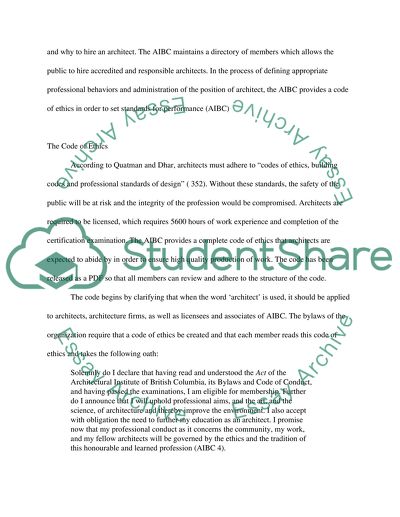Cite this document
(“Code of Ethics in Architectural Practice Essay Example | Topics and Well Written Essays - 2000 words”, n.d.)
Retrieved from https://studentshare.org/environmental-studies/1414056-code-of-ethics-in-architectural-practice
Retrieved from https://studentshare.org/environmental-studies/1414056-code-of-ethics-in-architectural-practice
(Code of Ethics in Architectural Practice Essay Example | Topics and Well Written Essays - 2000 Words)
https://studentshare.org/environmental-studies/1414056-code-of-ethics-in-architectural-practice.
https://studentshare.org/environmental-studies/1414056-code-of-ethics-in-architectural-practice.
“Code of Ethics in Architectural Practice Essay Example | Topics and Well Written Essays - 2000 Words”, n.d. https://studentshare.org/environmental-studies/1414056-code-of-ethics-in-architectural-practice.


